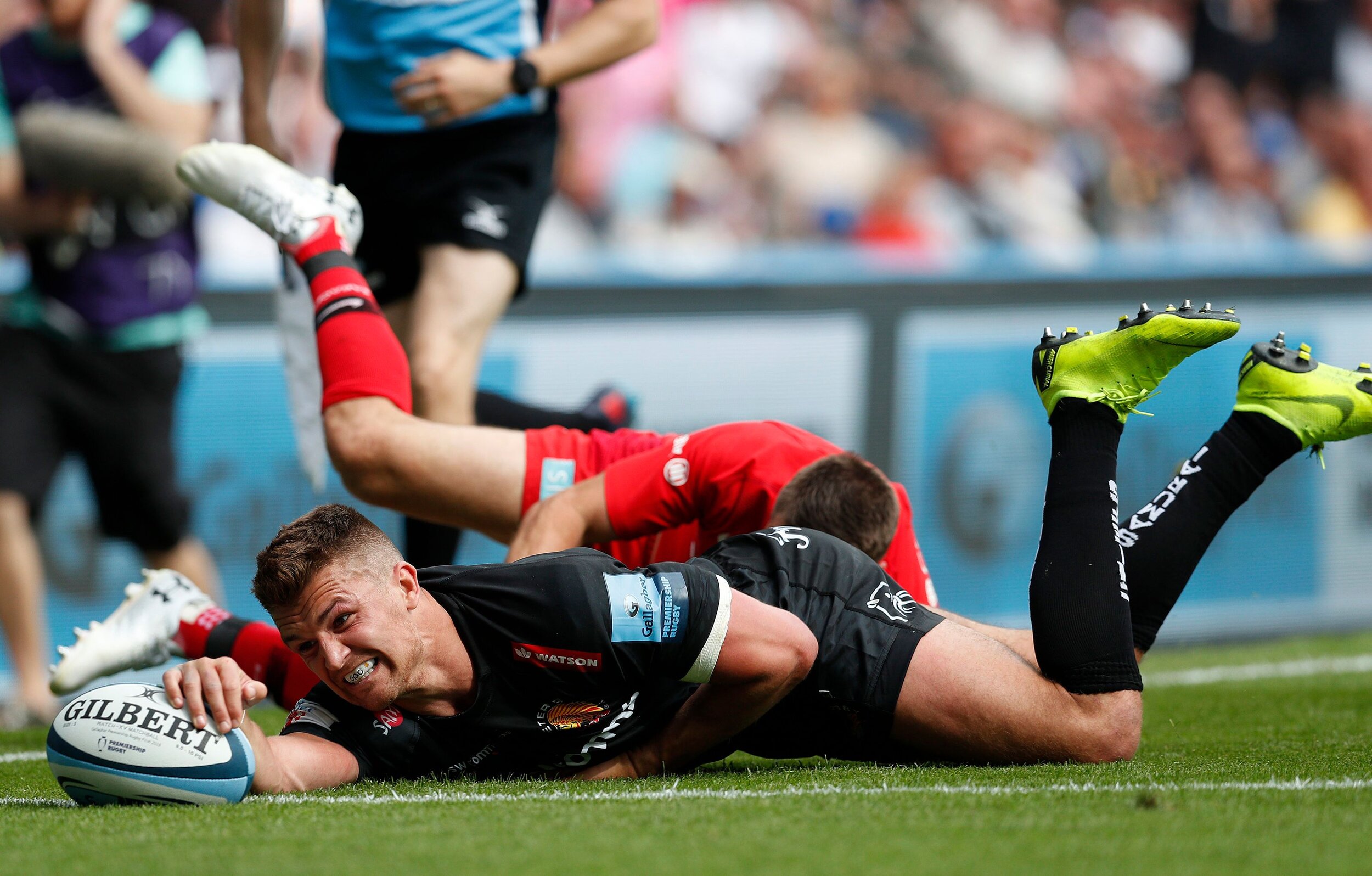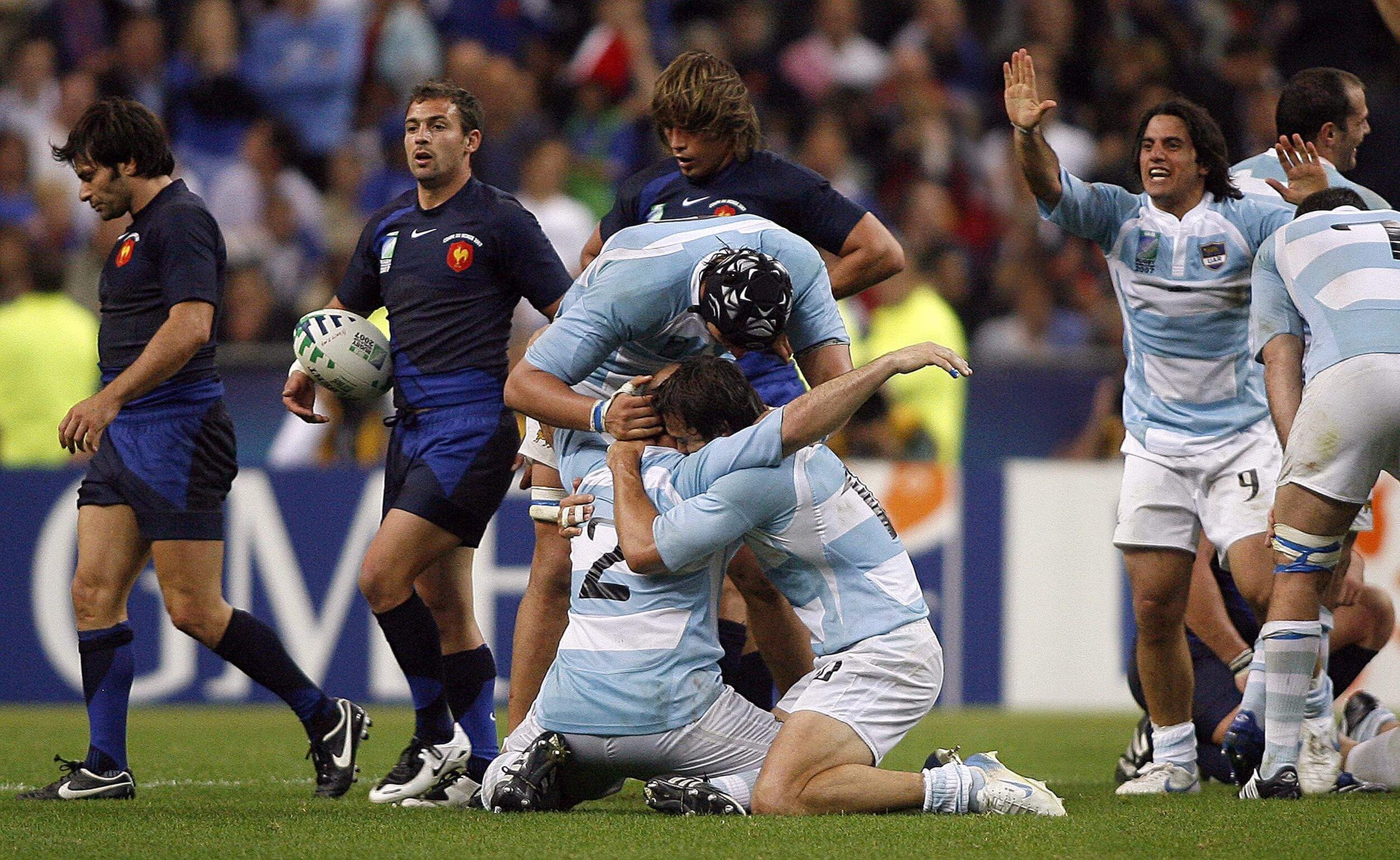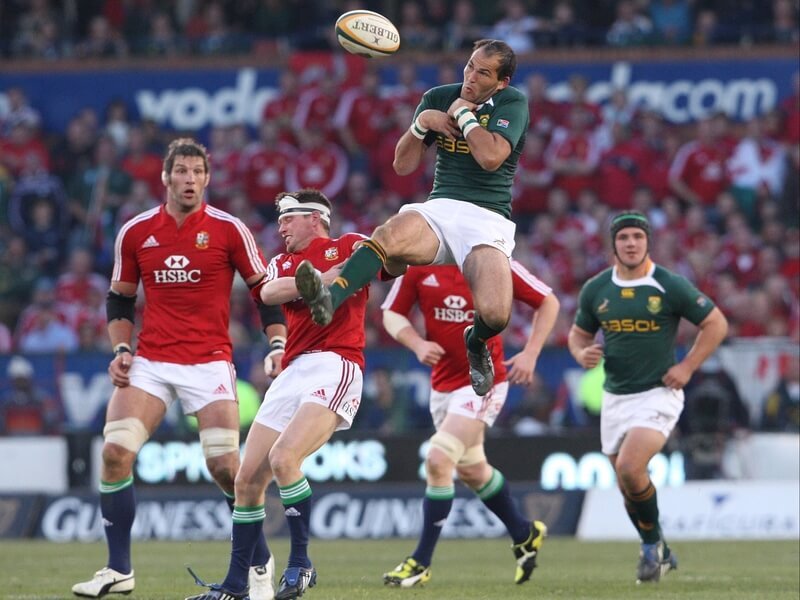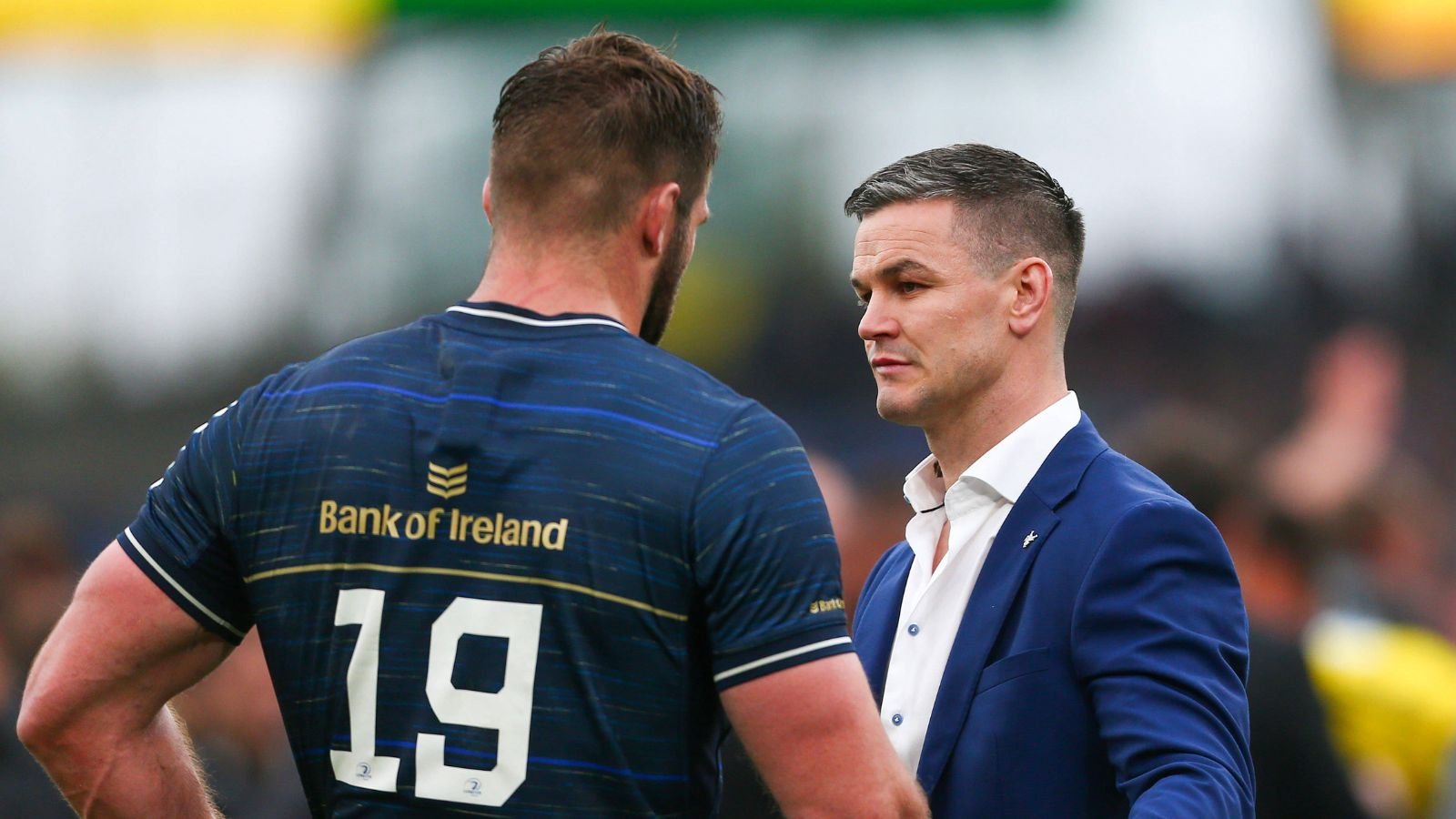Rugby’s Greatest Matches: South Africa 32-34 Japan
Japan celebrate Karne Hesketh’s winning try against South Africa at the 2015 Rugby World Cup
Credit: Eddie Keogh/Reuters
It honestly is the game that, to any rugby fan, needs no real introduction.
Seen by many as the jumping-off point for one of the dominant stories of the past decade of rugby, it started fairly innocuously on a mild afternoon in Brighton.
It was the second day of the 2015 Rugby World Cup - the host nation, England, had got the tournament underway with a win over Fiji the night before at Twickenham and one of the other high hopes, South Africa, rolled onto the south coast looking to get their own tournament up and running in a similar fashion.
Their opponents? Japan. A side that had not won in their previous 18 Rugby World Cup matches since a 52-8 win over Zimbabwe in 1991.
Easy money, right?
Japan carry quiet confidence
Little though the South Africans knew, Japan arrived at the Brighton Community Stadium with a steely belief in their abilities.
Under the watchful eye of current England coach Eddie Jones, the Japanese side had prior to the tournament shirked the traditional notions of how they should be operating against bigger and better opponents, instead choosing to play to their own strengths.
The story at the time was that Jones had paid a visit to then-Bayern Munich manager Pep Guardiola, to learn about how he trained his players in off-the-ball movement and their ability to, as Jones would later put it, “maximise their resources”.
He had set his team up to play their own style instead of sacrificing their strengths to try and nullify the brutal South African pack, as many a side is want to do.
With Michael Leitch already firmly established as the no-nonsense leadership figure Jones clearly values in his squad - see his later reliance on Dylan Hartley with England - and with one of the fastest rising stars in the coaching world marshalling his forward pack in Steve Borthwick, Jones had the tools to make a team in his own image.
Japan take it to the Springboks
Japan captain Michael Leitch scores Japan’s first try against South Africa
Credit: Getty Images
While no-one could have possibly predicted the drama was to come, from the moment referee Jérôme Garcès blew his whistle the Japanese showed what they were here to do.
They attacked the South Africans from all angles with pace, imagination and direction, neglecting the arm-wrestle at the breakdown in favour of hitting rucks hard, securing quick ball and getting the hell out of Dodge.
However, it was that very arm-wrestle which saw the first try come the way of the Boks after eight minutes, with Francois Louw dotting down following a driving maul.
Many around the stadium may have felt a sense of resignation at the early score. They were probably right to - South Africa getting away to an early start never boded well for teams that far outstripped that day’s opponents.
However, this was no ordinary team.
Not only did Japan recover their composure following the early setback, they went on to hit back in similar style as forwards and backs alike piled into their own maul to eventually end with captain Leitch over the whitewash on the half-hour mark.
Judging by the roar that greeted it, there was already no doubting the crowd favourite of the day.
A quick response from Bismarck du Plessis gave the South Africans a half-time lead that few expected them to relinquish.
South Africa struggle to escape
Fullback Ayumu Goromaru attacks the South African defence
Credit: Charlie Crowhurst/Getty Images
Step forward one Ayumu Goromaru.
The unheralded fullback’s metronomic boot punished repeated indiscipline from South Africa to ensure that, despite a try coming to Lood de Jager shortly after the resumption, Japan entered the final quarter of the match locked up with the mighty Springboks at 22-all.
As the match wore on, a sense of belief began to envelop not just the stadium, or even the whole of England, but the whole rugby world.
As the second-half minutes ticked by and Japan continued to stay in the game, heads in pubs across the country, previously engaged in conversation or whatever else, began to turn towards the TV in the corner on which was playing out a sporting drama that wouldn’t let go.
No matter what the South Africans did, a side containing the most international caps ever fielded by a Springbok side with 851 could not get away from the irresistible energy, determination and desire of their Japanese counterparts.
Scrumhalf Fumiaki Tanaka was playing the game of his life at the base of the ruck, tiring out the Springbok forwards and guiding his side around the field perfectly.
Even when South Africa retook the lead through a runaway Adriaan Strauss try, Japan would not go away.
What would follow would go down as the moment Japanese fans truly started to believe.
Down by seven with just over ten minutes to go, Japan launched a raid straight from a lineout just inside the South African half.
Soft hands from inside centre Harumichi Tatekawa and then flyhalf Kosei Ono put Kotaro Matsushima - who would be arguably the star of the tournament four years later - through a gap.
He then had the composure under major pressure to find the rampaging Goromaru on his outside, who beat the covering Springbok defence to the line.
The stadium, and the sudden Japanese fans across the country, went berserk.
The moment the rugby world stood still
A Springbok penalty would restore the lead back to three points, and then came the moment the planet seemed to stand still.
With seconds on the clock, Japan were awarded a very kickable penalty. It was incredible - Japan were about to nab a draw against South Africa. What a result for the Brave Blossoms.
The one man not thinking that way? Michael Leitch.
The world watched on stunned as the signal was made that Japan would take the set-piece. What were they doing? The clock was in the red, the draw was there for the taking.
Another South African infringement. Surely this time? Nope. Everyone is still thinking - why?
Moments later, they knew exactly why.
The roar that went up as Amanaki Mafi brushed off the attempted Springbok tackle and released the ball to send Karne Hesketh over in the corner was quite unlike anything rugby had ever heard before.
Karne Hesketh goes over for the winning try and secures a memorable victory for Japan
Credit: Unknown
Japanese fans in the stadium shed tears of joy. Grown men across the country, who had never so much as set foot in Japan, sang their praises long into the night.
The mighty Springboks looked flabbergasted, all their worst nightmares come to fruition as Brighton erupted around them.
The image of captain Jean de Villiers, a fractured jaw sustained in the match giving him a haunted quality, staring at the ground in disbelief is one of the defining moments of the tournament.
It was a victory for the bravest of Blossoms, but even in the immediate aftermath there was a sense that this victory was no mere chance. The feeling told you a dormant rugby nation had finally arrived.
Victory the catalyst for rise of Japan
The importance of this game in the context of modern rugby history is only further underlined by the trajectory the nation has seen since.
The improvements (prior to their recent exclusion) of the Sunwolves in Super Rugby have played second fiddle to the rise of the domestic Top League as a destination for the very best players from around the world.
One need only look at Beauden Barrett’s recent move to the league as a sign of the pulling power of the nation and its competition.
On an international level, the prospect of hosting the World Cup in 2019 only spurred the Brave Blossoms on to greater heights.
A timely reminder of their powers came at Twickenham in November 2018 as they gave eventual 2019 finalists England a mighty scare. Japan blew their hosts off the park in the first 40 minutes with captain Michael Leitch looking every bit the talisman he has always been in one of the great individual Twickenham performances.
They were value for more than a 15-10 lead at the break in that game and one could feel excitement building across the game to see what they would produce in their home World Cup.
It was safe to say they were not disappointed, as Japan lit up the pool stage to emerge as group winners after dispatching one-time favourites Ireland and also Scotland en route to a creditable exit at the hands of eventual winners, South Africa.
And so it came full circle, seemingly, but in so many ways the circle has not ended as the rise of Japanese rugby is not slowing down.
When we look back at the journey the Blossoms took in years to come, there will be many places we can point to but we will never forget that it started on a day in Brighton where no-one believed in them - except themselves.






















